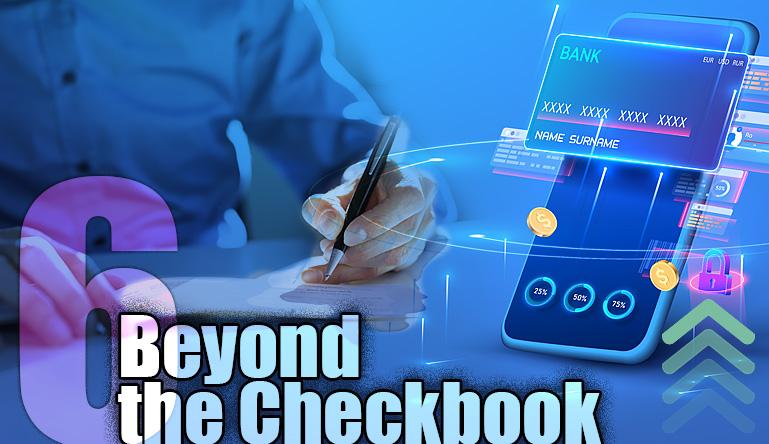-
 Vice President of Sales, Catalis Payments
Vice President of Sales, Catalis PaymentsA passionate sales leader, he builds dynamic teams, driving customer success via strategic growth, innovation, and global relationships.
View all posts
This is part six of our “Beyond the Checkbook: Driving the Digital Government Payment Revolution” series, exploring how digital innovation is transforming government payment systems. Stay tuned for more insights about security, fraud prevention, accessibility, modernization, and real-world success stories from agencies across the country.
Security Architecture in Government Digital Payments
As digital transactions become the norm, public agencies face a growing imperative: secure every interaction, every system, and every cent. For governments, digital payment processing for local government demands more than just convenience; it demands confidence. Citizens expect their financial and personal information to be handled with the same rigor applied to critical infrastructure. That’s why strong, purpose-built security architecture is a non-negotiable foundation of modern e-government payment services.
To deliver on that expectation, agencies must build trust by design, embedding protection into every layer of their government payment processing systems and infrastructure, not just applying it after the fact.
The Cost of Insecurity
While online payments for government services streamline workflows and improve convenience, they also introduce risk. Cyberattacks on public institutions have surged in recent years, targeting everything from property tax platforms to utility and court payment processing software. A single breach can compromise thousands of resident records, incur regulatory penalties, and erode public trust.
The financial and reputational impact of a breach is staggering. From identity theft to operational outages, agencies may face prolonged downtime, legal consequences, and multimillion-dollar recovery costs. Especially in the public sector, where budgets are tight and staffing is lean, the cost of not modernizing far outweighs the investment in a secure, integrated cloud-based government payment platform.
That’s why PCI-compliant payment processing for government requires more than reactive defenses. It calls for a proactive, comprehensive architecture designed specifically for the security and compliance demands of public finance.
Designing Trust: Key Security Features
The most effective government payment platforms don’t rely on a single defense. Instead, they implement multilayered safeguards across hardware, software, and user access points. These include:
- End-to-end encryption of sensitive payment and user data during transmission and storage
- Tokenization that replaces credit card numbers with randomized, non-sensitive values
- Multi-factor authentication (MFA) for administrators and users
- AI-powered fraud detection that identifies suspicious patterns in real time
- Role-based access controls, ensuring staff only access what they need
Together, these security layers reduce exposure, limit attack surfaces, and help ensure that payments remain secure, whether a citizen is using a self-service payment portal for government, tapping a phone, or submitting a permit fee online.
Safeguarding the Connections Between Systems
Integrated government payment systems often interface with tax software, permitting workflows, utility billing systems, and court records. Each of these connections introduces potential vulnerabilities if not secured properly.
Best-in-class platforms enforce API integration best practices for government software platforms, such as:
- Use of encrypted API keys and authentication tokens
- Rate limiting to prevent brute-force attacks
- Rigorous data validation and payload filtering
These practices are especially important when deploying a customizable government payment gateway with open API, ensuring flexibility doesn’t come at the cost of security.
Layering in real-time payment reporting for municipalities further enhances control. If irregular activity occurs, administrators are alerted immediately and can take proactive steps before harm is done. That level of visibility is essential in fast-paced, citizen-facing environments where every transaction must be trusted.
Evolving Trust by Design: Securing the Future of Government Payments
As more agencies adopt multi-channel payment processing for agencies, including mobile, kiosks, and web portals, the attack surface grows. Keeping up with emerging threats requires a security posture that evolves with technology.
Innovations shaping the future of secure online payments for the public sector include:
- Biometric authentication on mobile platforms for instant and secure logins
- Blockchain-based verification for unalterable audit trails
- Zero-trust architectures, where no user or system is implicitly trusted
- Quantum-resistant encryption, already being explored to protect long-term data privacy
Government teams are also embracing dashboards that integrate with security analytics tools. These platforms help track anomalies, prioritize risks, and continuously refine security policies based on real-world data.
For forward-looking agencies, the end goal is more than just compliance; it’s confidence. Every component of the payment platform, across all transaction types, should inspire trust from both citizens and internal stakeholders.
A Smarter Standard for Public Sector Security
In the age of constant connectivity, cybersecurity isn’t a line item; it’s a public mandate. Residents need to know their data is protected, and their payments are secure, regardless of how or where they choose to interact.
A proactive approach to digital payment security strengthens public trust and positions agencies for long-term success. And it starts by selecting the right partner.
Enabling Secure Payments with the Right Platform
Catalis Payments delivers integrated government payment systems built with a security-first design. From multi-channel transaction support for public sector payments to automated payment reconciliation for agencies, our platform meets the highest standards for compliance and protection.
Our solutions help municipalities implement secure online payment processing for government entities while enhancing citizen engagement, reducing manual workload, and supporting future scalability. Unlike generic processors, Catalis is purpose-built for the complexities of government, ensuring compliance, transparency, and trust are engineered into every transaction.
Visit Catalis to explore how our purpose-built solutions help government agencies secure every transaction and build lasting trust within the communities they serve.
This is part six of our “Beyond the Checkbook” blog series on digital payment transformation in government. Follow along as we publish more insights each week.


